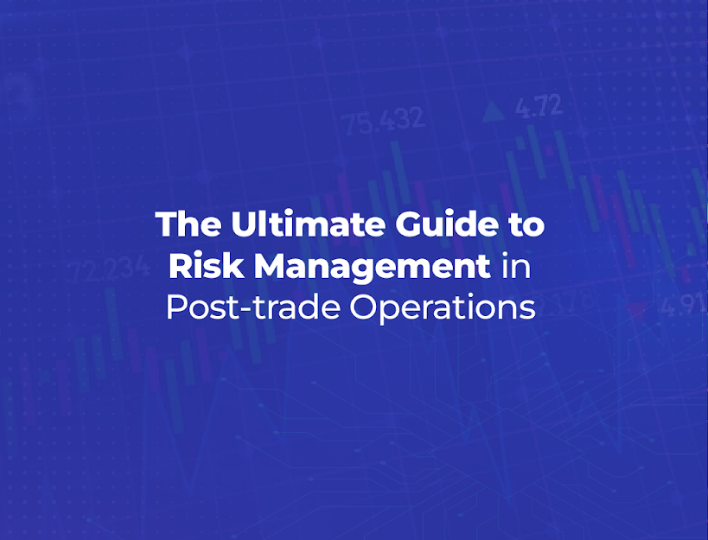It has become crucial to remain ahead of risks and uncertainties in the quickly changing environment of US capital markets. Effective risk management methods must be implemented to maintain growth and stability as technology continues to transform the financial sector. The idea of risk management automation in capital markets is not new, but the techniques and instruments used to implement it have changed dramatically.
Cash flow remains a vital artery for financial institutions, akin to any business. Mishandling it, as seen in Lehman Brothers’ 2008 collapse amid a global financial crisis, can prove catastrophic. Silicon Valley Bank’s recent tumble amid rising interest rates signals a cautionary tale. Neglected risk management imperils not only financial stability but also reputation, exemplified by US Bank’s faux account scandal. Adapting to industry regulations is imperative; violations lead to hefty fines, eroding both brand image and customer confidence. Evidently, the financial sector’s health hinges on prudent cash flow management, risk mitigation, and unwavering compliance.
The Evolution of Risk Management in Capital Markets
Risk management has traditionally been a labor-intensive manual procedure in capital markets. Although it was familiar, the traditional technique had built-in flaws like mistakes, delays, and potential oversights. The 2008 collapse of Lehman Brothers serves as a sobering reminder of the terrible repercussions that can result from insufficient risk management.
Enter automation, a seismic force that has changed this environment. A new era of risk management has begun with the incorporation of automated systems, bringing with it a wide range of benefits that go far beyond the limitations of conventional approaches. Financial institutions may better manage the complicated and turbulent market landscape by automating risk assessment, data collecting, and analysis.
A study by the McKinsey Global Institute revealed that automation can enhance productivity in financial services by 20-25%, translating to substantial cost savings and a competitive edge. Moreover, automated risk management systems facilitate real-time monitoring, enabling institutions to detect and respond to potential threats swiftly.
Accurate decision-making is another critical advantage. Automation reduces the risk of human error, ensuring that risk assessments are based on accurate data and analytics. According to a report by Deloitte, financial institutions that adopt automation for risk management experience a great reduction in errors related to risk assessment and reporting.
Automation also makes it easier to comply with changing industry rules. Automated systems can make certain that risk management procedures are up to date and in line with shifting requirements in a setting where adherence to rules is crucial. This is demonstrated by automated systems’ capacity for continuous monitoring and the production of real-time information, both of which lower the likelihood of non-compliance.
Best Practices for Implementing Risk Management Automation
Comprehensive Risk Assessment
A comprehensive risk assessment is crucial before implementing automation. The 2010 Flash Crash serves as a poignant example. On May 6, 2010, computerized trading algorithms that went awry caused the Dow Jones Industrial Average to drop nearly 1,000 points in a matter of minutes. This incident highlights the need to assess the dangers of automation.
Statistics revealed that algorithmic trading accounted for more than 50% of daily trading volume in 2019, according to a report by the U.S. Securities and Exchange Commission (SEC). While automation boosts productivity, it also increases the chance of incorrect trades or system failures. The $440 million loss from Knight Capital’s 2012 trading error illustrates the possible financial repercussions of insufficient risk assessment.
Complete assessments are necessary to reduce these hazards. Organizations can spot vulnerabilities by looking at historical data and running simulations. It has become crucial to implement strong risk management best practices, such as circuit breakers and kill switches, as advised by the SEC. For instance, following the Flash Crash, regulators created circuit breakers for the entire market to stop trading in times of high volatility.
Technology Integration
Technology integration is a critical best practice when implementing risk management automation. Seamless integration with existing systems enhances data flow and reduces disruptions. According to a study by Gartner, organizations that effectively integrate risk management automation solutions experience a 30% decrease in operational inefficiencies and a 20% improvement in decision-making speed. For instance, Company X integrated a risk management tool into their CRM system, resulting in a 40% reduction in manual data entry and a 25% increase in risk identification accuracy.
A case study from Deloitte showcases how seamless integration of risk management software reduced compliance costs by 15% and enhanced risk visibility across the organization. Choosing an automation solution that aligns with the existing technology stack ensures a smoother transition and optimizes risk management processes.
Data Security and Privacy
Prioritising strong data security and privacy protections is crucial when adopting automation in risk management, especially when working with sensitive financial data. In addition to defending the interests of clients and stakeholders, ensuring the preservation of such information also supports maintaining regulatory compliance and public confidence.
Following statutory requirements and industry standards, such as the General Data Protection Regulation (GDPR) and the Payment Card Industry Data Security Standard (PCI DSS), is one of the best practices. These frameworks include thorough instructions on data processing, encryption, access controls, and breach reporting, assisting businesses in creating a secure environment for financial data.
A case that underscores the importance of data security involves the Equifax data breach in 2017. Hackers exploited a vulnerability in Equifax’s system, compromising personal and financial information of 147 million individuals. The breach highlighted the critical need for robust cyber security measures and the severe consequences of failing to adequately protect sensitive data.
Continuous Monitoring and Training
Continuous monitoring involves consistently analyzing the system’s performance, identifying any anomalies or errors, and making necessary adjustments. This ongoing assessment enhances the system’s accuracy in risk identification and mitigation. For instance, a financial institution utilizing automated fraud detection must regularly review the system’s output to minimize false positives and negatives.
Simultaneously, providing regular training to employees is essential to harness the full potential of automation. By keeping the workforce updated on how the system operates, its strengths, and limitations, employees can make informed decisions based on its outputs. This process reduces errors and empowers employees to act confidently within the automated risk management framework. Amazon’s warehouse automation exemplifies the impact; continual refinement has elevated efficiency and reduced operational risks, showcasing the power of continuous monitoring and training in optimizing automation’s potential.
Customization and Scalability
Customization and scalability are pivotal in implementing effective risk management automation within financial institutions. Tailoring the solution to address the specific risk landscape of an organization is essential for accurate risk assessment. For instance, JPMorgan Chase leveraged customization to develop an in-house risk management system, leading to a significant reduction in credit and market risk exposure, as reported by The Wall Street Journal in 2020.
Furthermore, scalability is paramount to accommodate the evolving needs of a growing institution. A notable case is HSBC, which upgraded its risk management infrastructure to a scalable cloud-based platform. This move streamlined data processing, enabling them to analyze vast amounts of data in real-time, as cited in a 2021 McKinsey report.
According to a Deloitte survey, 78% of financial institutions view customization as a top priority in risk management technology. Moreover, a PwC study revealed that 82% of institutions believe scalability is crucial for managing future risk challenges.
Closing Thoughts
Adapting to the ever-evolving US capital markets demands a strategic shift towards automated risk management rather than considering it a mere choice. By leveraging automation, financial establishments can enhance risk management practices, ensuring resilience, compliance, and competitive edge. As leaders in technology and C-suite IT executives, the responsibility rests with you to steer this transformation, guiding your organization towards superior risk management in the digital brokerage realm.Ionixx comprehends the intricate dynamics of the fintech sector and the pivotal role of risk management within it. Our expertise in this domain and inventive digital brokerage solutions are tailored to empower your institution with the necessary tools to flourish in this era of disruption. We assist in optimizing post-trade processing while adeptly navigating the intricacies of risk and regulatory changes.





